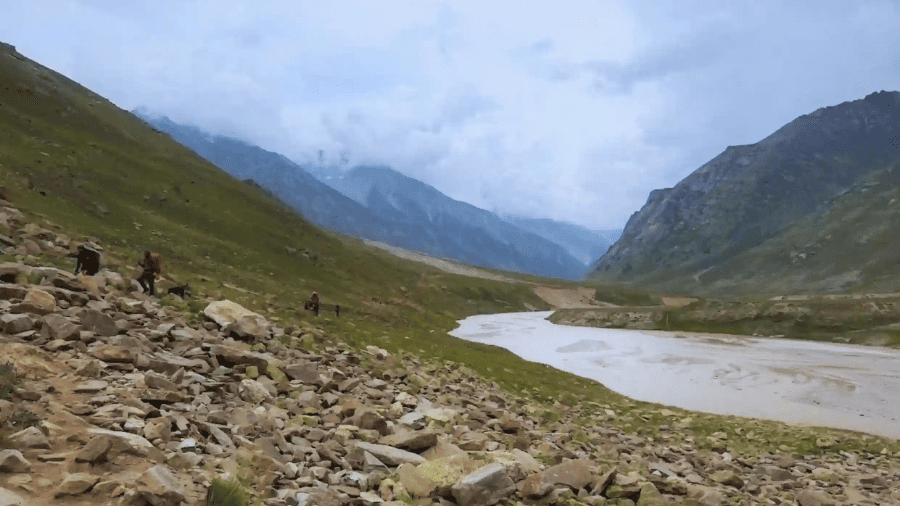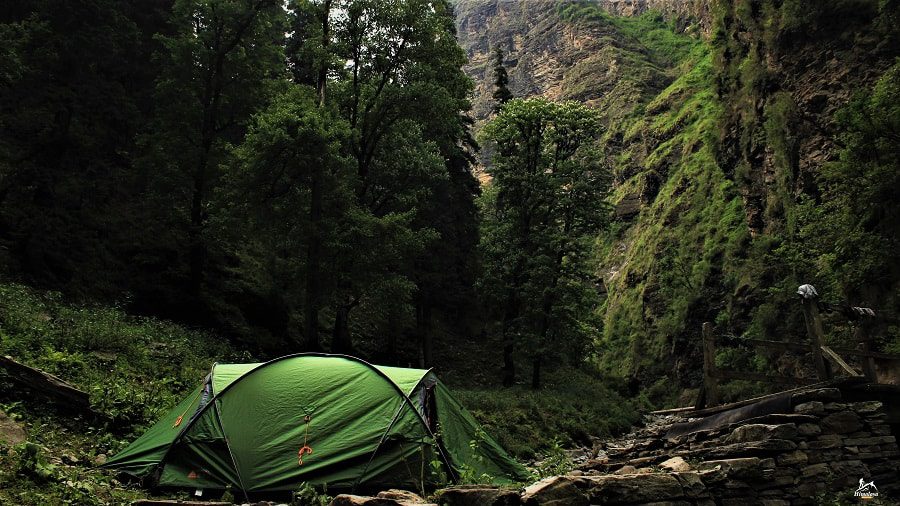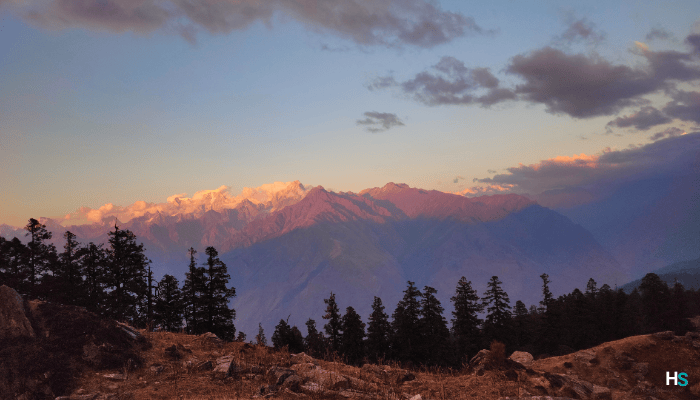
Eco friendly Treks and Hikes : Kuari Pass Trek
Eco-friendly treks and hikes: Eco-Friendly Consumerism for the Mindful Traveler.
This means that the interaction with the environment when trekking is much more than just exploring new territory but also being able to enjoy the true beauty of the world. Nonetheless, due to increasing popularity of trekking to the other areas the effects which adverse impact on the environment and communities also raises the same. There are two broad impacts relating to tourism and treks, namely; negative impact and sustainable trekking or eco-trekking. This guide discusses responsible trekking and aspects that a responsible trekker can practice to make their trips enjoyable while at trek. “Eco-friendly treks and hikes” are unique way of showing our gratitude to nature.
1) Leave No Trace Principles
- Eco-friendly trekking is defined by the Leave No Trace (LNT) concept during any treks in Nature. These guidelines enable trekkers to reduce their adverse influence to the environment as well as protect other areas that they consider to be of immense importance to the subsequent generations.
- Plan Ahead and Prepare: Do your own background study on the trekking company and read through the policies and rules and regulations of the trekking agency, and get yourself ready for the climate of the place that you are going to trek. This reduces undue consequences and disasters since it involves assessments on the type and extent of mobility required.
- Travel and Camp on Durable Surfaces: One must always stay on the authorized routes and camping grounds so as to avoid stepping on the undergrowth and thus causing discomfort to the animals. Do not create new trails or camp sites.
- Dispose of Waste Properly: Clear all the remains of food and dispose all the pack out trash and litters. Dip water with biodegradable soap and most important dispose all wastes in the right manner.
- Leave What You Find: Do not disturb anything on the ground such as rocks, plants, trees and other natural structures by putting them back as you found them. Do not take anything from the site or meddle with archeological and historical properties.
- Minimize Campfire Impact: Hotel guests should cook on a stove instead of having camp fire. For fires allowed, use of fire rings is encouraged and people should ensure that the fires are not large. Also, make sure before you can leave the scene of incidence to ensure that the fire has been put off thoroughly.
- Respect Wildlife: Do not feed any wild animals: Keep a definite distance between you and the wild animals. Provide proper storage of the food to ensure that it does not attract wild animals.
- Be Considerate of Other Visitors: This involves policies on Noise pollution and yielding trail right of way to other trekkers and obeying trail etiquette.
2) Eco-Friendly Gear
The selection of more environmentally sound equipment is another very important factor when it comes to green trekking. Turn to things that will last longer, items that can be used multiple times and those that are made from eco friendly materials.
- Sustainable Clothing: Choosing clothes for trekking that is organic, recycled or sustainably produced is the way to go. Well-known brands covering themselves into sustainability are Patagonia and REI.
- Reusable Equipment: Replace single-use plastic items such as water bottles and utensils with better re-usable kinds and save containers. It has features such as product like the LifeStraw; water is purified without the use of plastic bottles.
- Biodegradable Products: Always use biodegradable soap, tooth paste and any other product that comes into contact with water to reduce chemical pollution of the water bodies.
Eco friendly treks and hikes are epitope of gratitude to revert back to nature.
3) Minimizing Carbon Footprint
If you are to practice sustainable trekking, then it’s important that you travel lightly on the planet we live in. This ranges from a planned form of transport, a deliberate decision on energy consumption, and a deliberate decision on the kind of foods to take.
- Transportation: Low emission means of transport of transport such as trains, buses or sharing a car can be used to get to the location of the trekking. Take the necessary steps of reducing your carbon emission by participating in credible programs.
- Energy Use: There is a use of solar chargers and lights that can go a long way on cutting down on the use of worthless batteries and fossil fuels. It is either small solar panel that will assist in the charging of your devices during the trek.
- Local and Organic Food: Eat food that is produced locally as well as organic food in order to help boost the local farmers and cut on the number of miles spent in transporting the food. Reduce the amount of packaging by ordering and carrying goods in large quantities and using the packaging materials repeatedly.
4) Supporting Local Communities
- This kind of tourism also includes funding the communities that one comes across. This not only generates employment for the locals but also creates interaction and mutual appreciation of cultures.
- Stay in Local Accommodations: Choose independent accommodations, locally managed guestrooms, and home-stays. This means that the generated money is recycled within the community and the various aspects that people can experience in relation to culture are more realistic.
5) Mindful Wildlife Interactions
- Preserving the wildlife is one of the things that characterise eco-trekking. Sustainable interactions imply that wildlife is not affected and ecosystems are kept in the state they are in.
- Keep a Safe Distance: However, to capture these animals in their natural behaviour avoid disturbing them by moving closer to them.
6) Maintenance
- This is true in that being a responsible trekker, one should try to contribute to the improvement and conservation of trails.
- Volunteer for Trail Work: It is easy to find organizations and local groups involved in trail maintenance who need volunteers. Recourse activities such as removing accumulated debris, eradicating site erosion, and designing/constructing sound trail features.
- Report Trail Issues: Remember to report to the nearest authority such as the local government, trail crews for any concern like the fallen trees, eroded areas or any other illegality. Reporting as soon as such developments are seen ensures the trails are safe and sustainable.
7) Cultural Sensitivity and Respect
- Hiking on other people’s land should exhibit courtesy to the local people’s cultures and respective customs.
- Learn About Local Customs: Study other cultures, norms and protocols of the society which you’re planning or are bound to interact with. A good example is an interaction with elders, it’s a sign of honor and prevents one from over stepping the elders, thus will be having no form of disrespecting them.
- Ask for Permission: When you are taking pictures of a person, the house, or any shrine, make sure you go for permission. It is advisable, always to respect the do’s and don’ts of the locals.
- Dress Appropriately: It is advised to dress appropriately following the etiquettes in the region which you will be visiting namely where they are string conservatory ethics or regions where conservative religions dominate.
8) Environmental Education
- Thus, raising awareness of the community, including the person who participated in eco-trekking, of the environmental problems and ways to solve them increases the significance of the activity.
- Learn About the Ecosystem: To have a background on some of the places you’ll be trekking, try to familiarize yourself with the floral, faunal and all other systems of the land. Thus, by enhancing the understanding of the environment, one develops an appreciation as well as the duties that go with it.
- Share Knowledge: Sensitize other trekkers as well as friends and members of the family regarding the significance of sustainable treks. Teaching others how to be environmentally conscious while implementing them will persuade others to follow these practices.
9) Sustainable Trekking Routes
- It is significative to reduce the pressure on the most used areas and for this you have to trek in less crowded place.
- Opt for Offbeat Paths: This will help to ease the congestion of popular areas through the search of undeveloped terrains. This also offers even a more isolative form of trekking, for it is typically done individually.
- Travel During Off-Peak Seasons: This is because there is less traffic during off-peak season and it is also eco-friendly because the area is able to have some time rest before the next travelers arrive. It also mostly makes it a more peaceful and fun process.
Eco-friendly Treks are about being able to make the right decision that will not in a way harm the environment, support the local people and also the conservation of the environment. Through responsible tourism, these trekkers will be in a position to make sure that the environment they get to explore is not in any way affected and or deteriorated hence preserving the beauty of our world for generations to come. Making an environmentally friendly trekking not only improves the experience but also helps to get closer to nature and its inhabitants.
Contact Details:
Himalaya Shelter organizes customized trekking programs for Winter treks, Summer treks, Monsoon treks, High mountain passes treks, Glacier treks, Cultural Exploration treks, and many others. With Himalaya Shelter, you can expect to get the best trekking experience by trekking with trained trek leaders, getting excellent quality equipment, and enjoying delicious meals while savouring the beauty of Mother Nature. For more details Contact Us on…
Contact No: +91 9458386006
Email ID: info@himalayashelter.com
In Himalaya Shelter, we provide you with the option to customize your trekking experience. Whether you’re a solo traveller, a group of friends, or a family, you can opt for our personalized tailor-made trekking program. This customized trek will be exclusively designed for you, taking into account your specific requirements for transportation, accommodation, meals, and any other premium facilities you may need during the trek. No other participants will be added to your group. Choosing a customized trek will enable you to fully enjoy the trek with your loved ones.
About Author

Himalaya Shelter
Recent news

23 Dec 2025

20 Dec 2025

18 Dec 2025

16 Dec 2025

10 Dec 2025
Recommended Treks

